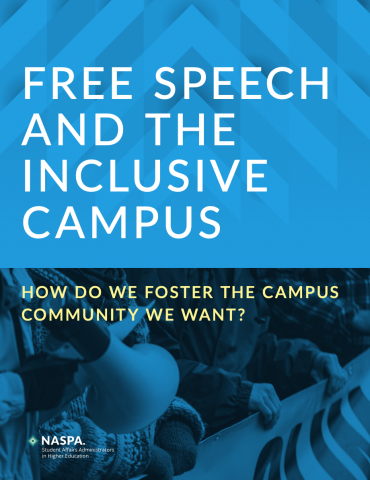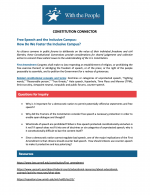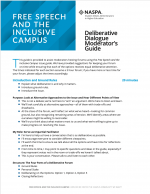Free Speech & the Inclusive Campus: How Do We Foster the Campus Community We Want? (Downloadable PDF)

The United States is becoming increasingly diverse and more polarized as we struggle to address complex public problems such as immigration, health care, economic inequality, and America’s role in the world (Pew Research Center, 2017). As public trust in our political system waivers, U.S. college campuses are grappling with issues of inclusion, diversity, and freedom of speech (Rainie, Keeter, & Perrin, 2019). Conversations about free speech on campus are often framed in opposition to diversity and inclusion and have spawned controversies, protests, and even violence. In 2017, a much-cited survey of more than 3,000 college students conducted by Gallup and the John S. and James L. Knight Foundation presented diversity and inclusion as directly opposite free speech, asking students which issues they felt were more important; 53% chose inclusion and 46% chose free speech. In today’s contentious and divided political environment, what should colleges and universities do to meet the roles and responsibilities of higher education to foster the campus community we want?
FRAMING QUESTIONS:
- Are free speech and an inclusive campus in opposition to each other? Do we have to give up one to have the other?
- How do we balance the rights of individuals with the responsibilities of the institution?
- Is this the campus community we want? What is the role of institutional leaders versus individuals in creating or changing campus culture?
This guide presents three options for deliberation about difficult problems regarding free speech
and inclusion—for which there are no perfect solutions. Each option offers advantages as well as drawbacks, and each reflects different ways of understanding what is at stake, forcing us to think about what matters most to us.



